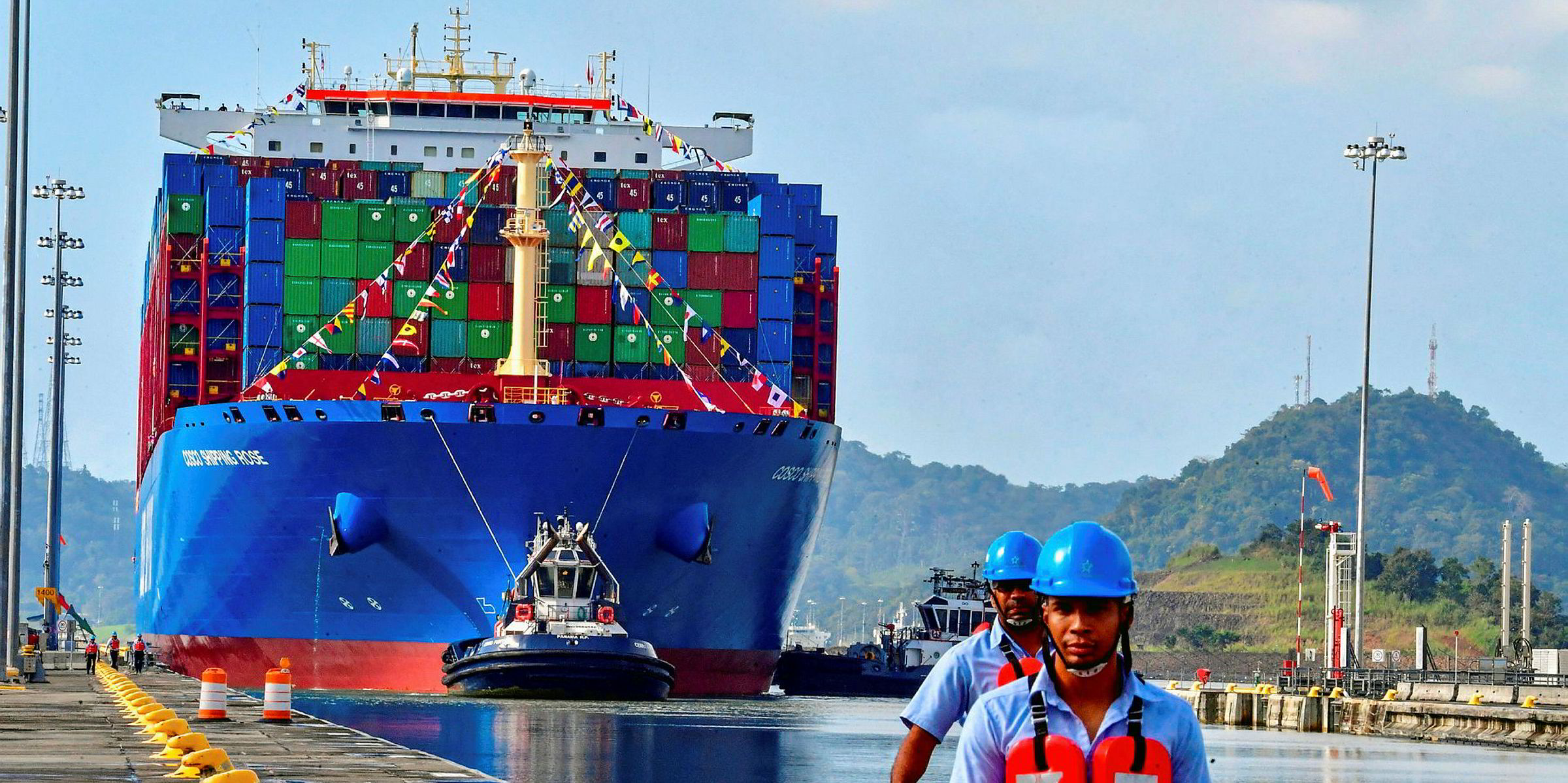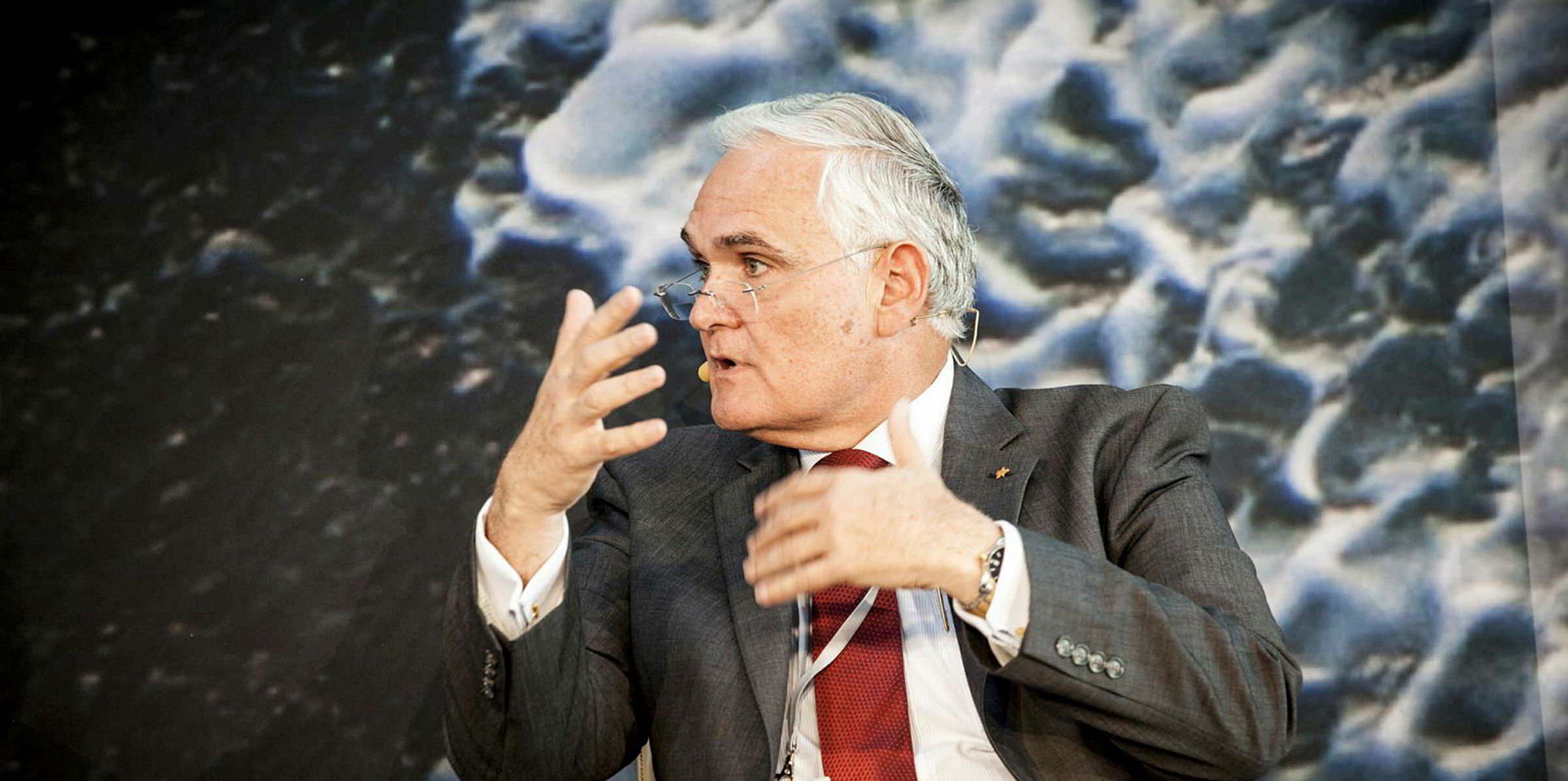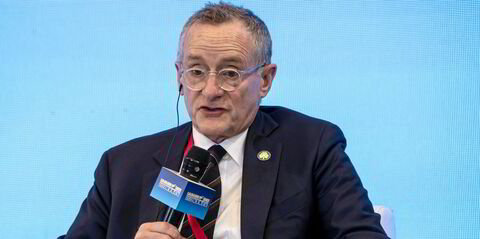Shallower Panama Canal draughts may help firm freight rates and provide the basis for further increases by limiting the amount of cargo that some lines can carry from Asia to the US East Coast.
But the tightness in the market could be undermined by lines adding capacity to the trade in an effort to cash in on the firming market.
Spot rates from Asia to the US have held steady in recent weeks. Rates to the US East Coast for the week ending 12 July rose slightly to $2,962 per 40-foot equivalent unit (feu), while rates from Asia to the US West Coast held steady at $1,646 per feu, according to the Freightos Baltic Index.
Space remains tight on both trades, providing the basis for freight rate increases next month.
Lines are expected to follow German carrier Hapag-Lloyd after it said it would implement a general rate increase of $560 per teu and $700 per feu from East Asia to all US and Canadian destinations, starting on 15 August.
Rates from Asia to the US East Coast have strengthened as vessel capacity on some existing loops had to be reduced due to previous draught restrictions in the canal.
Those restrictions were poised to increase, although shippers have been granted a reprieve. The Panama Canal Authority (ACP) planned to reduce the maximum draught from 13.4 metres to 13.1 metres for the neo-panamax locks, and from 12 metres to 11.7 metres for the panamax locks.
The latest seasonal restrictions, which were scheduled to take effect from 16 July, were suspended for a sixth time last week after canal authorities made a fresh assessment of the levels of Gatun Lake.
The canal authority has been steadily reducing the draught since January, when it was decreased to 14.9 metres, requiring some vessels transiting the neo-panamax locks to trim or offload cargo.
Meanwhile, several carriers have announced blanked sailings for August.
‘Considerable uncertainty over cargo demand’
“This strategy to keep supply in check is working, with substantial price rises in early June and early July, including China-US West Coast prices 10% higher month on month and 5% year on year,” said a report by Freightos.
But the efforts of some lines to cancel sailings could be undermined by rivals seeking to fill the gap.
The efforts of some lines to cancel sailings could be undermined by rivals seeking to fill the gap
Throughout July, China Cosco Shipping, Maersk Line and Mediterranean Shipping Co (MSC) will continue to deploy “extra loaders” on the transpacific trade, according to analyst Alphaliner, “despite considerable uncertainty over prospects for cargo demand in the coming months”.
The extra loaders will compensate for the three blank sailings implemented by the Ocean Alliance partners that removed 34,250 teu from the trade this month, it added.
But even more capacity will be injected into the trade next month with the launch of a service by Israeli carrier Zim and the 2M Alliance partners Maersk Line and MSC. Alphaliner said the new services will add 7% to the current weekly capacity on routes to the US East Coast and US Gulf.
Containerships remain the main users of the neo-panamax locks, where one-quarter of vessels are boxships of 12,000 teu to 14,500 teu.
That figure could rise due to efforts by the ACP to encourage more containership tonnage. It proposes “to retain and incentivise increased cargo volumes” by cutting rates for lines carrying between two million teu and three million teu per year through the waterway, with additional reductions for lines deploying more than three million teu.
ACP administrator Jorge Quijano argued that this will “increase transparency and flexibility, among other improvements”.
Deutsche Bank analyst Amit Mehrotra estimated that owners would receive a $3.25-per-teu reduction on volumes between two million teu and three million teu, and a $5-per-teu cut above this. He expects the incentive to continue the trend of driving containerised traffic east, where most end-demand lies.





